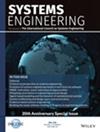Applying real system age to DoD systems
IF 1.6
3区 工程技术
Q4 ENGINEERING, INDUSTRIAL
引用次数: 1
Abstract
Why do some systems exceed their planed lifecycle while others retire at or before their planned retirement date? A possible answer to this question is that systems that exceed their planned lifecycle have several common non‐functional attributes that enable them to continue to provide value to their stakeholders well beyond their planned lifecycle. As this is the case in several Department of Defense systems, it should be possible to develop a mathematical representation of the real system age for these engineered systems to compare that age to their chronological age and determine when to retire a system. This paper expands on previous work to develop a mathematical relationship for real system age by applying it to several DoD systems to include the B‐52 bomber, A‐10 aircraft, F‐117 stealth fighter, and the OH‐58D helicopter. It identifies that the systems the DoD retired have similar traits as their real system age closely follows the chronological age and approaches a 25‐year threshold for retirement. With this equation, it is possible to identify when a system is due for retirement or if an upgrade to the system may be able to extend the useful life of the system.将真实系统年龄应用于DoD系统
为什么有些系统超过了计划的生命周期,而另一些则在计划的退役日期或之前退役?这个问题的一个可能答案是,超过计划生命周期的系统有几个常见的非功能属性,使它们能够在计划生命周期之外继续为利益相关者提供价值。由于国防部的几个系统都是这种情况,因此应该可以为这些工程系统开发真实系统年龄的数学表示,将该年龄与按时间顺序排列的年龄进行比较,并确定何时退役系统。本文扩展了以前的工作,通过将其应用于国防部的几个系统,包括B-52轰炸机、a-10飞机、F-117隐形战斗机和OH-58D直升机,来开发真实系统年龄的数学关系。它确定,国防部退役的系统具有相似的特征,因为它们的实际系统年龄与实际年龄密切相关,接近25年的退役阈值。通过这个等式,可以确定系统何时到期退役,或者系统升级是否能够延长系统的使用寿命。
本文章由计算机程序翻译,如有差异,请以英文原文为准。
求助全文
约1分钟内获得全文
求助全文
来源期刊

Systems Engineering
工程技术-工程:工业
CiteScore
5.10
自引率
20.00%
发文量
0
审稿时长
6 months
期刊介绍:
Systems Engineering is a discipline whose responsibility it is to create and operate technologically enabled systems that satisfy stakeholder needs throughout their life cycle. Systems engineers reduce ambiguity by clearly defining stakeholder needs and customer requirements, they focus creativity by developing a system’s architecture and design and they manage the system’s complexity over time. Considerations taken into account by systems engineers include, among others, quality, cost and schedule, risk and opportunity under uncertainty, manufacturing and realization, performance and safety during operations, training and support, as well as disposal and recycling at the end of life. The journal welcomes original submissions in the field of Systems Engineering as defined above, but also encourages contributions that take an even broader perspective including the design and operation of systems-of-systems, the application of Systems Engineering to enterprises and complex socio-technical systems, the identification, selection and development of systems engineers as well as the evolution of systems and systems-of-systems over their entire lifecycle.
Systems Engineering integrates all the disciplines and specialty groups into a coordinated team effort forming a structured development process that proceeds from concept to realization to operation. Increasingly important topics in Systems Engineering include the role of executable languages and models of systems, the concurrent use of physical and virtual prototyping, as well as the deployment of agile processes. Systems Engineering considers both the business and the technical needs of all stakeholders with the goal of providing a quality product that meets the user needs. Systems Engineering may be applied not only to products and services in the private sector but also to public infrastructures and socio-technical systems whose precise boundaries are often challenging to define.
 求助内容:
求助内容: 应助结果提醒方式:
应助结果提醒方式:


